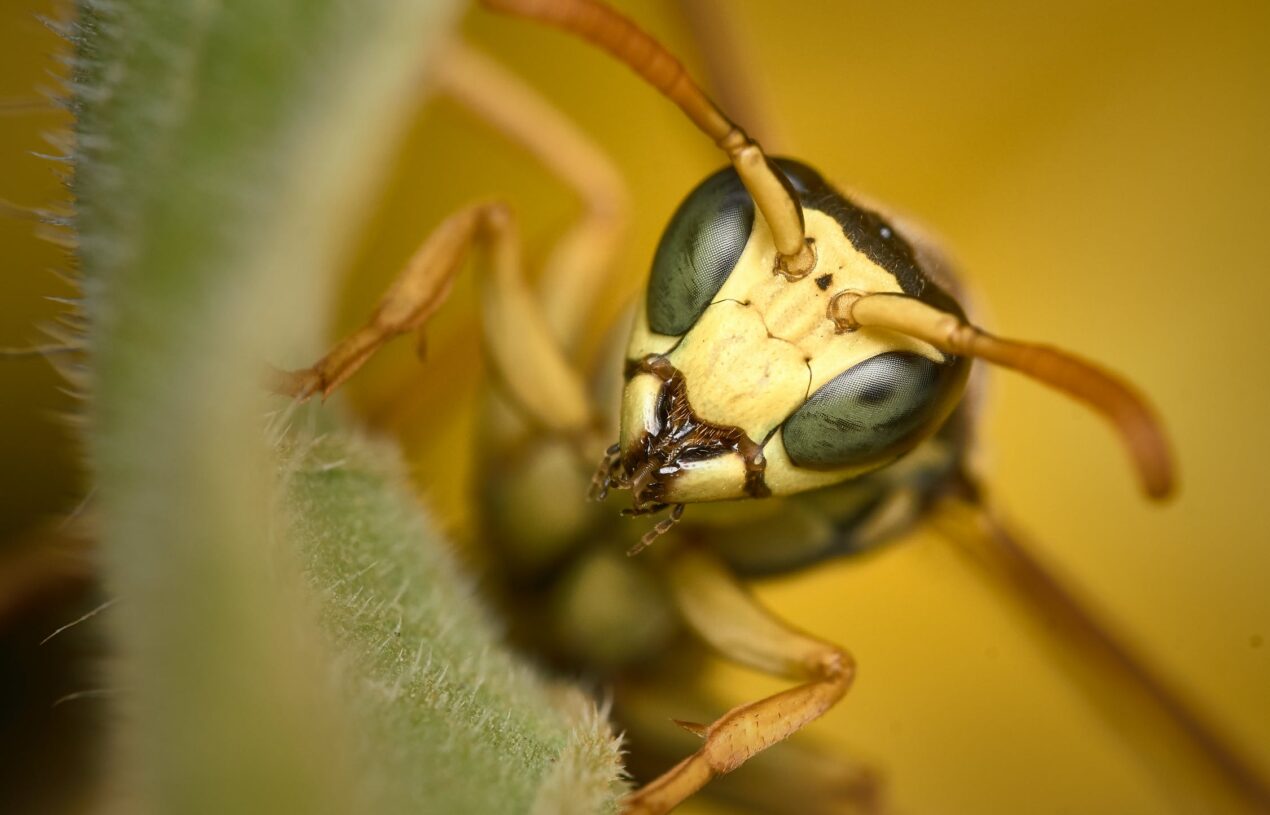While seeing a wasp or two in your house or yard isn’t usually a cause for alarm, a wasp infestation can be inconvenient and even dangerous. At best, a wasp infestation can put a damper on your outdoor activities, but their painful stings can also warrant a trip to the emergency room.
It’s vital to address the problem as soon as possible, but unfortunately, a wasp infestation can be difficult to spot until it’s too late.
So, if you suspect you have a wasp problem, how do you know for sure?
Here’s everything about how to get rid of wasps – including what signs you should look out for.
1. An Increased Wasp Population
Seeing more wasps than usual is the first sign that you have a wasp problem. Wasps are easily identified by their long, slender bodies and distinctive coloring – which is usually yellow with narrow black stripes.
Usually, wasps will build their nests on outdoor structures or the exterior of your house – that’s why you’ll often see them outside in your yard or hanging around your home.
If you notice more wasps in your yard than usual, there’s a good chance they have a nest nearby. If you see multiple wasps but can’t locate their nest, they’re probably still building it or looking for a place to nest. Having the exterior of your home treated by a professional pest control specialist is the best way to deter wasps from building their nests too close to your home.
2. Seeing Wasps Inside Your Home
Besides nesting on outdoor structures, wasps also build their nests in attics, garages, and crawlspaces. If you spot wasps in your house, they are probably nesting somewhere inside.
If this is the case, you should call a pest control specialist to remove them right away. Wasps can be extremely aggressive and territorial if they feel like their nest is threatened.
Don’t try to remove the wasps yourself – they can attack you in their numbers and escape into the rest of your house.
3. Finding Chewed Wood on Your Property
If you see wasps flying to and from your home, they’re probably gathering building materials and working on building a nest.
Many different types of wasps use wood to build their nests. They’ll gnaw at trees, logs, wooden structures, and even the wood in your house.
Depending on the colony’s size, you’ll see varying degrees of damage to the wood in the surrounding area. If left unchecked, wasps can cause a lot of damage.
4. Finding a Wasp Nest
When you’re looking for a wasp nest, watch out for symmetrical structures. Wasp nests don’t resemble piles of leaves or splatters of mud – they look like deliberate structures.
Depending on the type of wasp, nests can look like balls of paper or clay vases, and some can get as large as a basketball. Before the wasps finish building their nest, you should notice an unmistakable hexagonal pattern – which is where they house their larvae.
Getting Rid of the Wasp Infestation
If you’ve spotted any of the telltale signs of a wasp infestation, the best thing to do is call a professional to deal with it.
You or someone in your home could be allergic to wasp stings – and they can be highly aggressive and territorial when threatened. Don’t try to remove any wasp nests on your own.

